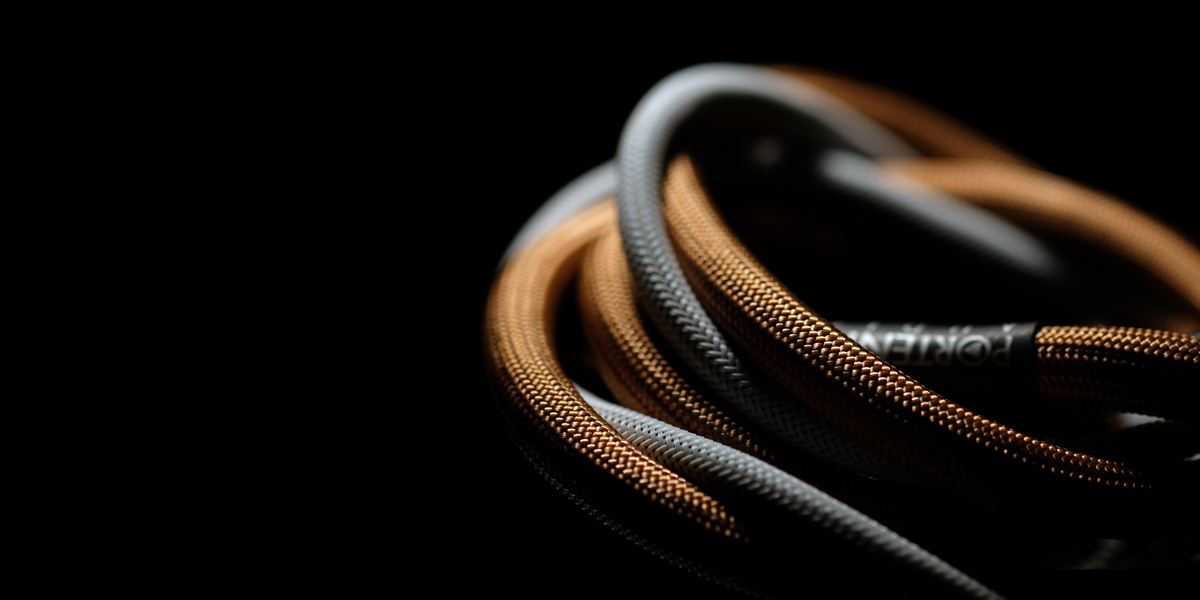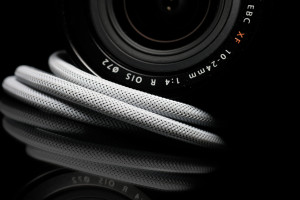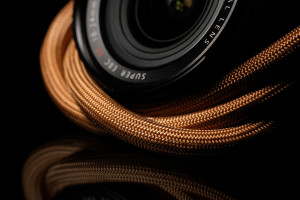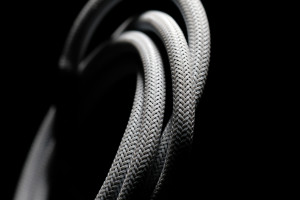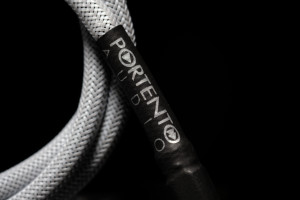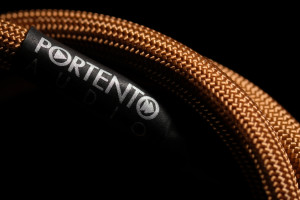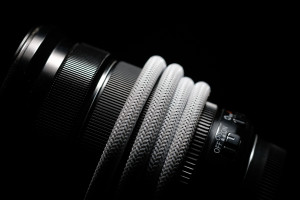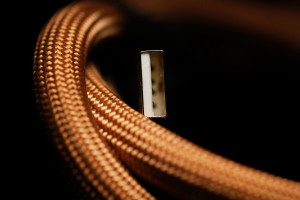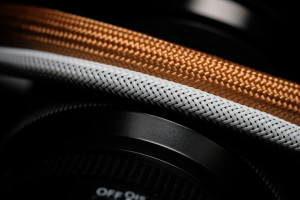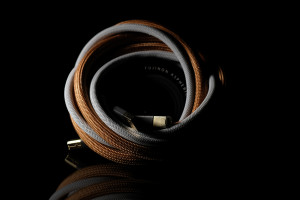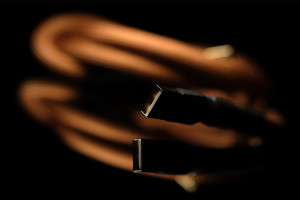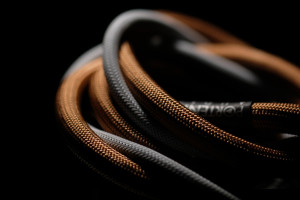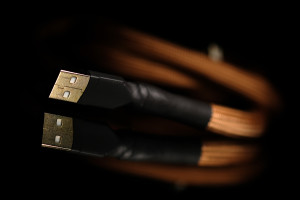Portento Audio was established in Italy in 2014 as the result of its founder’s pursuit of happiness. At the domestic Audio Video Show the man himself – Pier Paolo Prospero – had his goods proudly on display. To know what’s what, I had to snatch two specific products and have them on duty at my place. That’s how Portento Audio Copper One and Copper Signature USB cables became this review’s subjects. Enjoy!
Introduction
This review’s origin dates back to the domestic Audio Video Show in late 2018 and the Radisson Blu Sobieski hotel. Due to its narrow corridors, petite rooms and high temperature inside, many visitors aren’t exactly thrilled about this particular location. The same event’s other two far roomier places – PGE Narodowy and Golden Tulip – are rightfully considered as comfier to be in. However, as a self-styled reporter and not a regular visitor I’ve always enjoyed the Sobieski, mostly because of its very cozy and intimate vibe plus rooms in large part occupied by newcomer businesses. One never knows what to expect of these mostly small audio establishments. Talks to their owners I see as the best way of finding out what they’re into and that’s exactly how I got myself familiar with this review’s Italian operation – Portento Audio.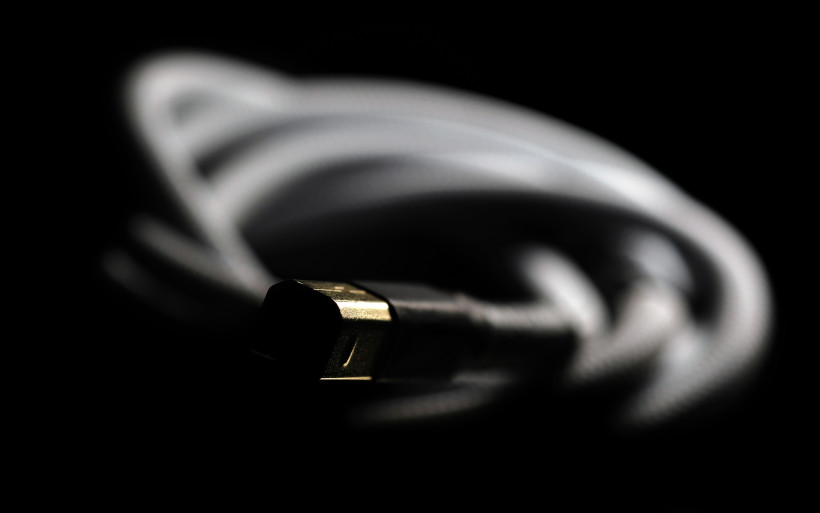 Portento Audio was already briefly introduced in my regular Audio Video Show coverage released in early December 2018. Sharply dressed power strips, conditioners, filters, various cables and visually gorgeous Harmonya amp, were what incentivized me to stay a bit longer in this company’s room and leave my card with its founder – Pier Paolo Prospero. Back then my senses were already overloaded, the show’s gates were about to be closed and time was of essence. Nonetheless, what the man had on display at the Radisson Blu Sobieski hotel truly looked the part and implied commitment, that was the main takeaway. Portento Audio’s owner also struck me as kind and honest individual with engineering knowledge, clear goals and priorities sorted. I wished him all the best and was on my way.
Portento Audio was already briefly introduced in my regular Audio Video Show coverage released in early December 2018. Sharply dressed power strips, conditioners, filters, various cables and visually gorgeous Harmonya amp, were what incentivized me to stay a bit longer in this company’s room and leave my card with its founder – Pier Paolo Prospero. Back then my senses were already overloaded, the show’s gates were about to be closed and time was of essence. Nonetheless, what the man had on display at the Radisson Blu Sobieski hotel truly looked the part and implied commitment, that was the main takeaway. Portento Audio’s owner also struck me as kind and honest individual with engineering knowledge, clear goals and priorities sorted. I wished him all the best and was on my way.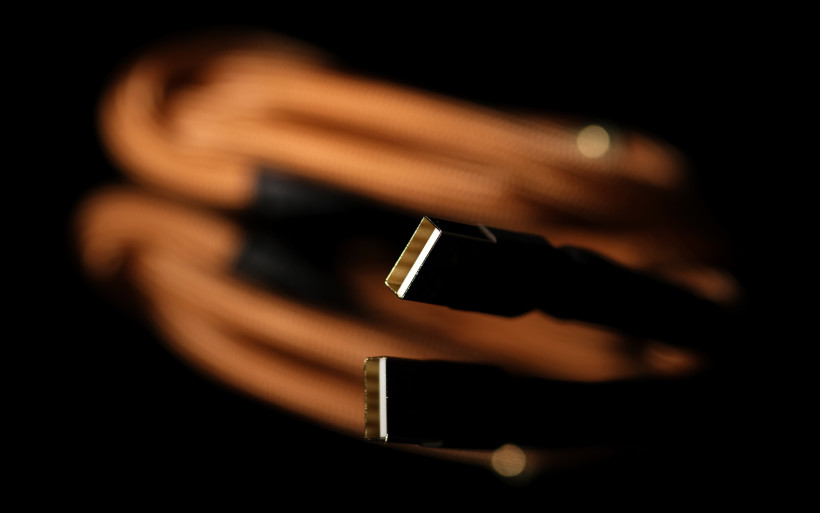 Let’s fast forward to the late 2019. Pier Paolo wrote to me just before the recent Audio Video Show and expressed his interest in my work at these pages. The event just around the corner introduced the perfect opportunity to meet once more at the Radisson Blu Sobieski and have a proper conversation. Upon asking about his background, the man told me that he caught the audio bug at the age of 14, which resulted in his first setup based on Thorens TD160 turntable, Acoustic Research speakers and an amp by Luxman. Two years later he spent his summer break in electronic factory, where he learnt basics and developed his soldering skills.
Let’s fast forward to the late 2019. Pier Paolo wrote to me just before the recent Audio Video Show and expressed his interest in my work at these pages. The event just around the corner introduced the perfect opportunity to meet once more at the Radisson Blu Sobieski and have a proper conversation. Upon asking about his background, the man told me that he caught the audio bug at the age of 14, which resulted in his first setup based on Thorens TD160 turntable, Acoustic Research speakers and an amp by Luxman. Two years later he spent his summer break in electronic factory, where he learnt basics and developed his soldering skills.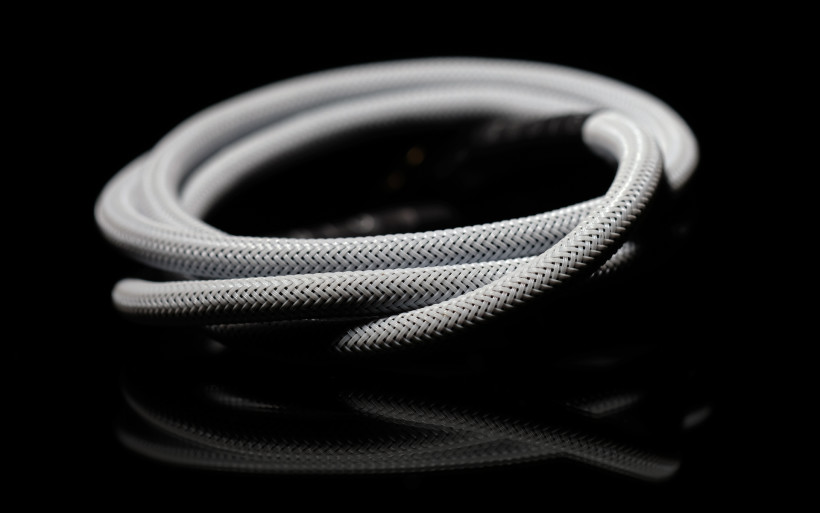 Portento Audio’s CEO has been a semi-pro musician into electric bass as his instrument of choice. Latino, reggae and world music he listed as his favourite genres. As a side activity, Pier Paolo’s been also a road manager responsible for many international artists’ tour production. Such a track record turned music into a substantial part of his life, that’s for sure. When asked about the reason behind his transition to audio as a full-time job, the man explained that the Italian crisis had a negative impact on the whole IT sector, in which he spent 25 years as a project leader and ERP software developer. As a self-driven and focused individual, Pier Paolo decided to eventually leave this environment, take matters into his own hands and that’s how Portento Audio was born in April 2014.
Portento Audio’s CEO has been a semi-pro musician into electric bass as his instrument of choice. Latino, reggae and world music he listed as his favourite genres. As a side activity, Pier Paolo’s been also a road manager responsible for many international artists’ tour production. Such a track record turned music into a substantial part of his life, that’s for sure. When asked about the reason behind his transition to audio as a full-time job, the man explained that the Italian crisis had a negative impact on the whole IT sector, in which he spent 25 years as a project leader and ERP software developer. As a self-driven and focused individual, Pier Paolo decided to eventually leave this environment, take matters into his own hands and that’s how Portento Audio was born in April 2014.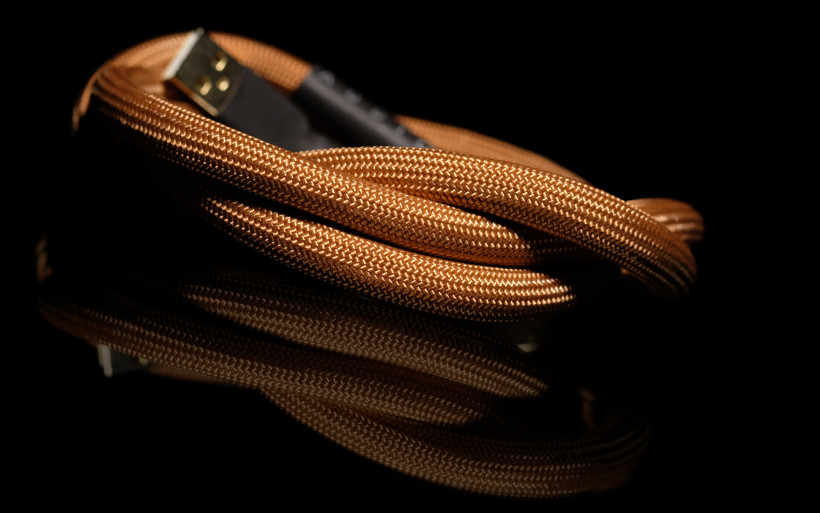 As Pier Paolo put it, his internal voice at some point forced him to bypass conventional walls and, in spite of economic stagnation, follow passion towards two things he’s always deemed as mandatory in his dream lifestyle; arts and music. Having my own very similar transition on mind, I understood well what he did and why. I truly respect people who pursue their dreams in the first place and not financial gratification. In any case, shortly past the domestic show Portento Audio’s founder left me two his USB loaners; Copper One and Copper Signature. This selection wasn’t accidental, though. The lengthy conversation the two of us had coloured me deeply interested in what his portfolio opener and top dog could do versus themselves as much as other products.
As Pier Paolo put it, his internal voice at some point forced him to bypass conventional walls and, in spite of economic stagnation, follow passion towards two things he’s always deemed as mandatory in his dream lifestyle; arts and music. Having my own very similar transition on mind, I understood well what he did and why. I truly respect people who pursue their dreams in the first place and not financial gratification. In any case, shortly past the domestic show Portento Audio’s founder left me two his USB loaners; Copper One and Copper Signature. This selection wasn’t accidental, though. The lengthy conversation the two of us had coloured me deeply interested in what his portfolio opener and top dog could do versus themselves as much as other products.
Build
Each of two cables snatched from the Portento Audio’s room was of 1.0m length. Both rested on a thin foam bed inside of a nice quite colorful cardboard with the manufacturer’s logo on top. Without seeing it, I can’t comment on the two loaners’ usual packaging scheme, but something along the lines of what was given to me shortly after the show is my firm bet.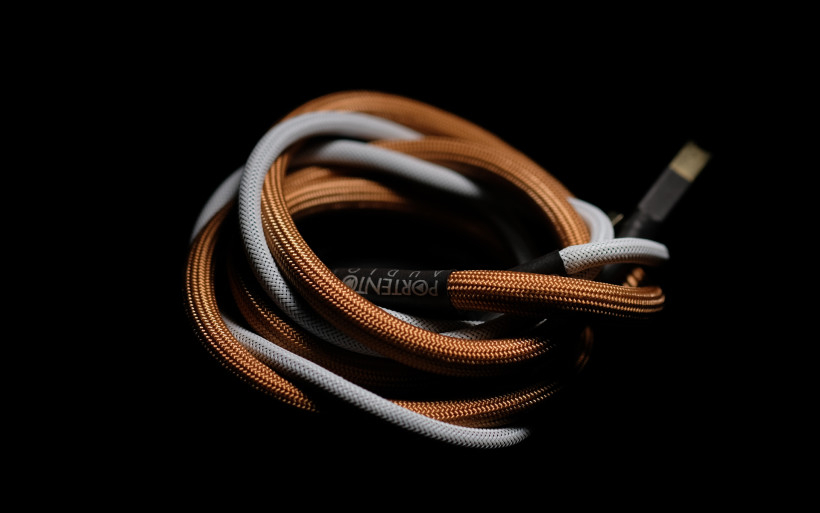 Portento Audio Copper One is Pier Paolo’s the most affordable (€119) USB model, which belongs to his Digital series. For €40 extra this cable’s dual-headed version with separate data and power lines can be had. I purposely went with the regular option due to two reasons; its low cost and my transport’s only one type A USB socket. Clean 5V from elsewhere wasn’t an issue, but my goal was to have everything as simple as it potentially could be.
Portento Audio Copper One is Pier Paolo’s the most affordable (€119) USB model, which belongs to his Digital series. For €40 extra this cable’s dual-headed version with separate data and power lines can be had. I purposely went with the regular option due to two reasons; its low cost and my transport’s only one type A USB socket. Clean 5V from elsewhere wasn’t an issue, but my goal was to have everything as simple as it potentially could be. Pier Paolo very openly stated that his introductory Copper One model doesn’t sport anything special in particular. He listed solid shielding, sizeable copper wires and their twisted pair in case of data transmission lines, that’s it. A good cable to the man is a balanced mixture of a conductor, its dielectric material, internal geometry and also aesthetics. Today’s entry-level USB leash is very slinky and light. Each its gold-plated end is finished with a heat-shrink cut instead of regular USB enclosures, which contributes to sleek low-profile look, high ease of use and compliance with every USB socket out there. As far as build quality goes, the Copper One introduced no reason to complain. It looks like a handmade DIY case, though all in all nicely executed.
Pier Paolo very openly stated that his introductory Copper One model doesn’t sport anything special in particular. He listed solid shielding, sizeable copper wires and their twisted pair in case of data transmission lines, that’s it. A good cable to the man is a balanced mixture of a conductor, its dielectric material, internal geometry and also aesthetics. Today’s entry-level USB leash is very slinky and light. Each its gold-plated end is finished with a heat-shrink cut instead of regular USB enclosures, which contributes to sleek low-profile look, high ease of use and compliance with every USB socket out there. As far as build quality goes, the Copper One introduced no reason to complain. It looks like a handmade DIY case, though all in all nicely executed.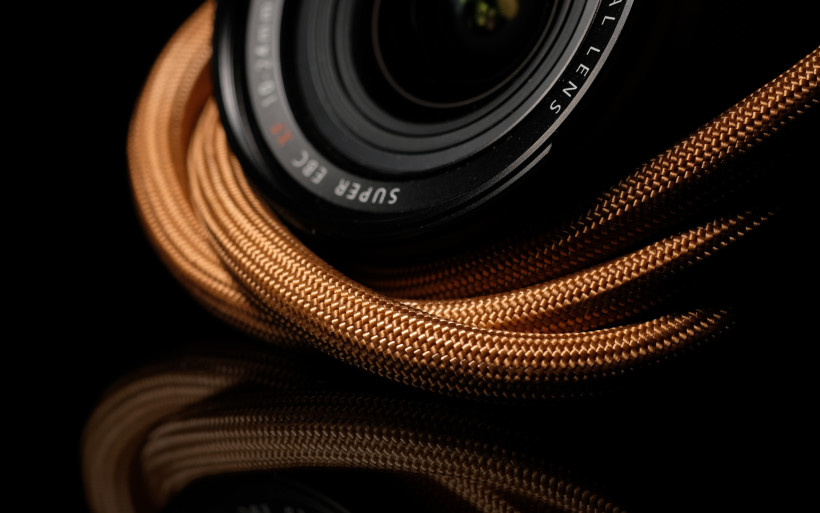 The Copper Signature USB cable (€599) belongs to Portento Audio’s TOTL Signature range. This model incorporates copper conductors of 7N grade. Both its connectors are gold-plated just as it was the case with the lower-tiered specimen. The biggest difference in the former model is Pier Paolo’s proprietary shielding technology labeled as AIST II. Its goal is to revert shielding phase in the middle of transmission to land even more silence and improve soundstage. The heavier and thicker Copper Signature feels more substantial versus the Copper One, however it proved to be as equally low-profile and handy. The costlier model is a tad squeaky due to its thick internal shielding layers’ gentle movement. I don’t see this as a con as fairly tight outer braiding keeps everything inside nicely in place, but there’s one thing I’d address. I’d apply filler material to two gaps formed at junctions where both braid ends and plugs meet underneath heat-shrinks. This would result in more seamless look of the product. Oh, and lastly, all Portento Audio goods are handmade by Pier Paolo himself.
The Copper Signature USB cable (€599) belongs to Portento Audio’s TOTL Signature range. This model incorporates copper conductors of 7N grade. Both its connectors are gold-plated just as it was the case with the lower-tiered specimen. The biggest difference in the former model is Pier Paolo’s proprietary shielding technology labeled as AIST II. Its goal is to revert shielding phase in the middle of transmission to land even more silence and improve soundstage. The heavier and thicker Copper Signature feels more substantial versus the Copper One, however it proved to be as equally low-profile and handy. The costlier model is a tad squeaky due to its thick internal shielding layers’ gentle movement. I don’t see this as a con as fairly tight outer braiding keeps everything inside nicely in place, but there’s one thing I’d address. I’d apply filler material to two gaps formed at junctions where both braid ends and plugs meet underneath heat-shrinks. This would result in more seamless look of the product. Oh, and lastly, all Portento Audio goods are handmade by Pier Paolo himself.
Sound
In order to review Portento Audio’s two USB cables, fidata HFAS-S10U handled storage and transport duties, then LampizatOr Pacific DAC (KR Audio T-100/Living Voice 300B + KR Audio 5U4G Ltd. Ed.) took over to pass the signal to either Trilogy 925 and Boenicke W11 SE+, or the FirstWatt F7 plus Thöress DFP combo and Cube Audio Nenuphar. Boenicke S3 speaker cables were used in-between listed floorstanders and amps. All key components were connected via LessLoss C-MARC cables to the GigaWatt PC-3 SE EVO+ power conditioner, which was then married to the main in-wall outlet via LC-3 EVO cable by the same manufacturer. The Amber-modded Excellence ICs by Audiomica Laboratory were used in-between my DAC and remaining components during all auditions. Although this review’s differently tiered Italians were naturally used in-between my transport/server/streamer and DAC, two distinctive approaches were engaged to evaluate them. I view mild cable skeptics and/or individuals not familiar with such products’ input as the entry-level Copper One’s most probable target group. The talk here is about consumers willing to find out for themselves whether an audio specimen more expensive than a regular printer throwaway can actually change anything. That’s why Portento Audio’s bottom drawer USB model versus a stock €1 leash of the same length seemed to me as the most practical, commonsensical and realistic scenario.
Although this review’s differently tiered Italians were naturally used in-between my transport/server/streamer and DAC, two distinctive approaches were engaged to evaluate them. I view mild cable skeptics and/or individuals not familiar with such products’ input as the entry-level Copper One’s most probable target group. The talk here is about consumers willing to find out for themselves whether an audio specimen more expensive than a regular printer throwaway can actually change anything. That’s why Portento Audio’s bottom drawer USB model versus a stock €1 leash of the same length seemed to me as the most practical, commonsensical and realistic scenario. At first the el-cheapo USB cable was abducted from the printer nearby to then replace my audio setup’s usual USB residents; iFi audio’s three quality USB cables, one low-noise PSU, one galvanic isolator and one reclocker. Understandably, the route from the sonic bottom to a far happier place upstairs might not work right away. However, this order reversed oftentimes nets more perceptible and intense results, which is exactly what the swap above did. It introduced the sonic shift clearly not subtle and far from enjoyable. It’s safe to say that the musical image collapsed in effect and my platform’s quality took a deep plunge on each count there was. I strongly think that a performance dip this severe would have even the fiercest cable naysayer convinced that something very much wrong just happened.
At first the el-cheapo USB cable was abducted from the printer nearby to then replace my audio setup’s usual USB residents; iFi audio’s three quality USB cables, one low-noise PSU, one galvanic isolator and one reclocker. Understandably, the route from the sonic bottom to a far happier place upstairs might not work right away. However, this order reversed oftentimes nets more perceptible and intense results, which is exactly what the swap above did. It introduced the sonic shift clearly not subtle and far from enjoyable. It’s safe to say that the musical image collapsed in effect and my platform’s quality took a deep plunge on each count there was. I strongly think that a performance dip this severe would have even the fiercest cable naysayer convinced that something very much wrong just happened. Three days spent with the usual USB suspect on the job in the main setup didn’t make my accommodation phase any complete. Several issues with my platform’s performance were as perplexing as they were constantly audible. I couldn’t simply flip a switch in my head and stop hearing them, or perhaps subconsciously I didn’t want to, as the clear reminder that some USB treatment in-between my transport and DAC is a must. In any case, spatial shrinkage and flatness plus wobbly bass and fuzz which occurred, weren’t as troublesome as omnipresent grit, dryness and abnormally chiseled instrumental/vocal outlines. Due to significant impact on pretty much everything else, this trio was mapped as key troublemakers and the fact of not hearing them for so long contributed as well. But this aside, the Copper One very swiftly ended my struggle, that’s the main takeaway.
Three days spent with the usual USB suspect on the job in the main setup didn’t make my accommodation phase any complete. Several issues with my platform’s performance were as perplexing as they were constantly audible. I couldn’t simply flip a switch in my head and stop hearing them, or perhaps subconsciously I didn’t want to, as the clear reminder that some USB treatment in-between my transport and DAC is a must. In any case, spatial shrinkage and flatness plus wobbly bass and fuzz which occurred, weren’t as troublesome as omnipresent grit, dryness and abnormally chiseled instrumental/vocal outlines. Due to significant impact on pretty much everything else, this trio was mapped as key troublemakers and the fact of not hearing them for so long contributed as well. But this aside, the Copper One very swiftly ended my struggle, that’s the main takeaway.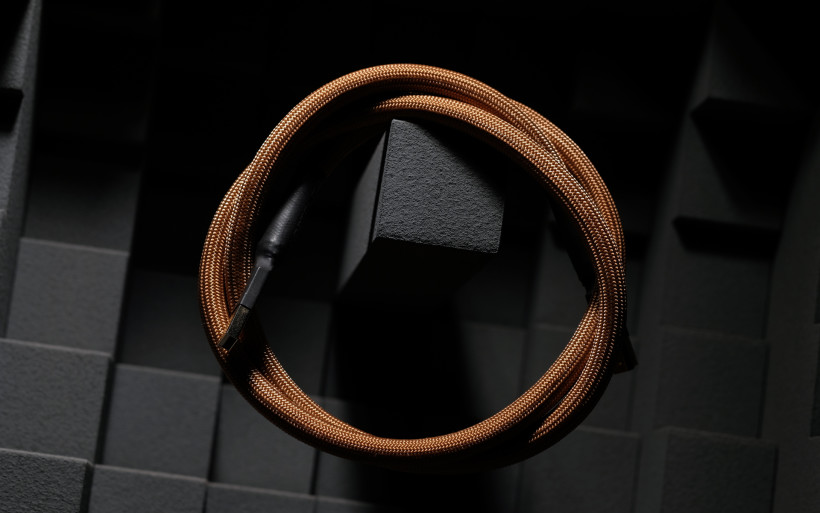 During our recent chat Pier Paolo listed neutrality and fluidity as his house sound profile, but silence as the foundational factor is what coloured me properly interested. Low noise floor in audio veins was our common ground; for him as a cable maker and for yours truly as a reporter. I got the impression that we understood each other perfectly. Of course at the domestic show I couldn’t tell whether Portento Audio’s products behaved accordingly to what I was told back then, but the Copper One loaner changed this status quo in an instant. It took the edge off my system. It banished all sibilants. Instrumental outlines it rendered softer and filled them with far more humid pigment. It tidied up spatial order and also increased perceptible on-stage depth. It deepened tonality and removed upstairs fizz in favour of more mass and longer decay in there. It made bass tighter and also sensibly fuller and rounder. Dynamic scale wise, it replaced twitchy sparks and hollow shout with proper snap. Virtual shapes finely separated and thus more present implied cleaner backdrop. Without a shred of doubt in my mind, all these changes were significant improvements.
During our recent chat Pier Paolo listed neutrality and fluidity as his house sound profile, but silence as the foundational factor is what coloured me properly interested. Low noise floor in audio veins was our common ground; for him as a cable maker and for yours truly as a reporter. I got the impression that we understood each other perfectly. Of course at the domestic show I couldn’t tell whether Portento Audio’s products behaved accordingly to what I was told back then, but the Copper One loaner changed this status quo in an instant. It took the edge off my system. It banished all sibilants. Instrumental outlines it rendered softer and filled them with far more humid pigment. It tidied up spatial order and also increased perceptible on-stage depth. It deepened tonality and removed upstairs fizz in favour of more mass and longer decay in there. It made bass tighter and also sensibly fuller and rounder. Dynamic scale wise, it replaced twitchy sparks and hollow shout with proper snap. Virtual shapes finely separated and thus more present implied cleaner backdrop. Without a shred of doubt in my mind, all these changes were significant improvements.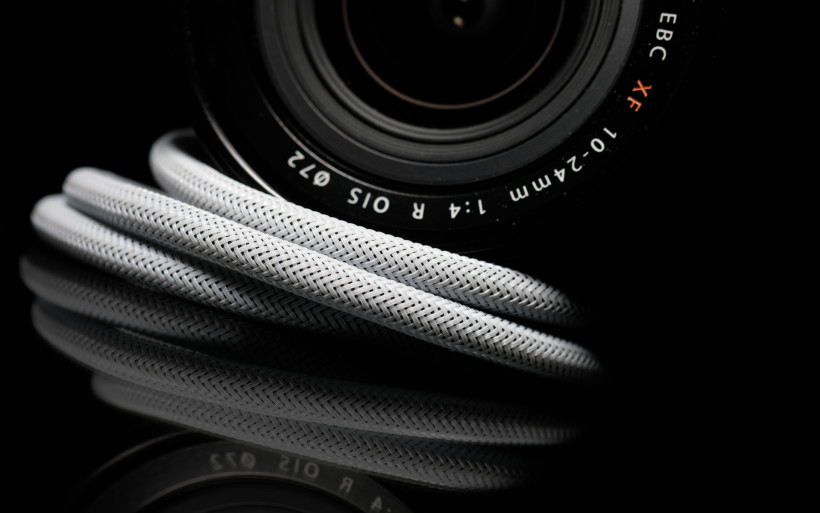 The Copper One’s action was as major as it was immediate, but also on the milder, bloomier, more euphonic and somewhat slower side versus the stock cable. The former’s potent cleaning service reminded me about iFi audio’s PowerStation put up against the GigaWatt PF-2 just recently. The Brit’s more humane approach and far higher score on music fluency also subtracted some agility points. In this context Portento Audio’s introductory USB cable would be iFi audio’s machine, but it did substantially more than the grainier, slimmer and more pale regular printer specimen somewhat along the lines of the PF-2. The Italian was just a hair slower in comparison, but most importantly its overall input far overshadowed this one tiny drawback. Of course the Copper One’s presence in setups like mine is extremely unlikely, however this doesn’t decrease its very potent work against basic USB specimens in such an environment.
The Copper One’s action was as major as it was immediate, but also on the milder, bloomier, more euphonic and somewhat slower side versus the stock cable. The former’s potent cleaning service reminded me about iFi audio’s PowerStation put up against the GigaWatt PF-2 just recently. The Brit’s more humane approach and far higher score on music fluency also subtracted some agility points. In this context Portento Audio’s introductory USB cable would be iFi audio’s machine, but it did substantially more than the grainier, slimmer and more pale regular printer specimen somewhat along the lines of the PF-2. The Italian was just a hair slower in comparison, but most importantly its overall input far overshadowed this one tiny drawback. Of course the Copper One’s presence in setups like mine is extremely unlikely, however this doesn’t decrease its very potent work against basic USB specimens in such an environment.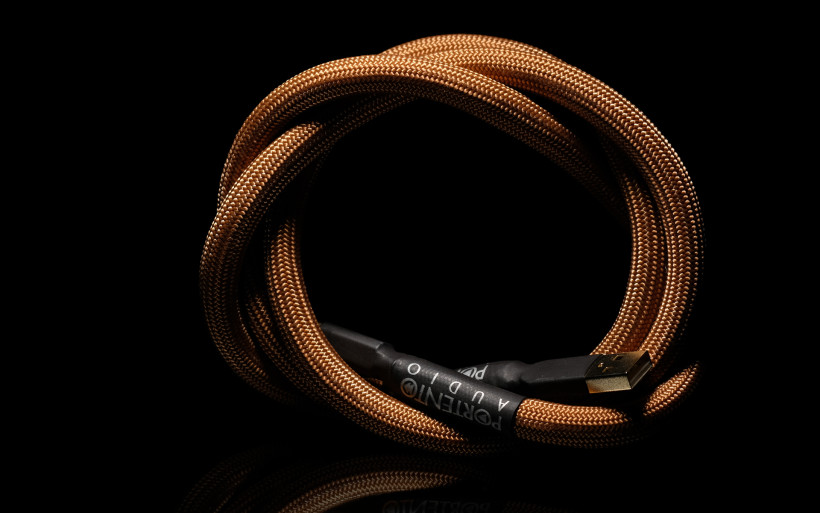 Once the Copper One’s input against the vanilla throwaway was mapped, it was time to include the five times dearer Copper Signature model. At this stage the key question was about Pier Paolo Prospero’s ability to scale performance of his two USB cables’ accordingly to their price difference. Once this base was covered, the costlier Italian had to fight against iFi audio’s nearly two times more affordable Mercury3.0 cable of the same length. And lastly, the former was put up against my full USB stack, just to ease my own curiosity.
Once the Copper One’s input against the vanilla throwaway was mapped, it was time to include the five times dearer Copper Signature model. At this stage the key question was about Pier Paolo Prospero’s ability to scale performance of his two USB cables’ accordingly to their price difference. Once this base was covered, the costlier Italian had to fight against iFi audio’s nearly two times more affordable Mercury3.0 cable of the same length. And lastly, the former was put up against my full USB stack, just to ease my own curiosity. The Copper Signature flaunted its traits versus its more affordable kin nearly as instantly and potently as the latter did against the printer bastard. Pier Paolo’s top shelf USB cable didn’t turn the sonic result at my place upside down, but its input my ears have found clear, understandable and very much along the lines of how its maker described it at the domestic show. Countless swaps between his two cables in hope of hearing something firm enough to hold on to, simply didn’t apply. Truth told, one back and forth painted quite the accurate picture of what happened, whereas everything that came afterwards merely reassured me in my initial findings.
The Copper Signature flaunted its traits versus its more affordable kin nearly as instantly and potently as the latter did against the printer bastard. Pier Paolo’s top shelf USB cable didn’t turn the sonic result at my place upside down, but its input my ears have found clear, understandable and very much along the lines of how its maker described it at the domestic show. Countless swaps between his two cables in hope of hearing something firm enough to hold on to, simply didn’t apply. Truth told, one back and forth painted quite the accurate picture of what happened, whereas everything that came afterwards merely reassured me in my initial findings.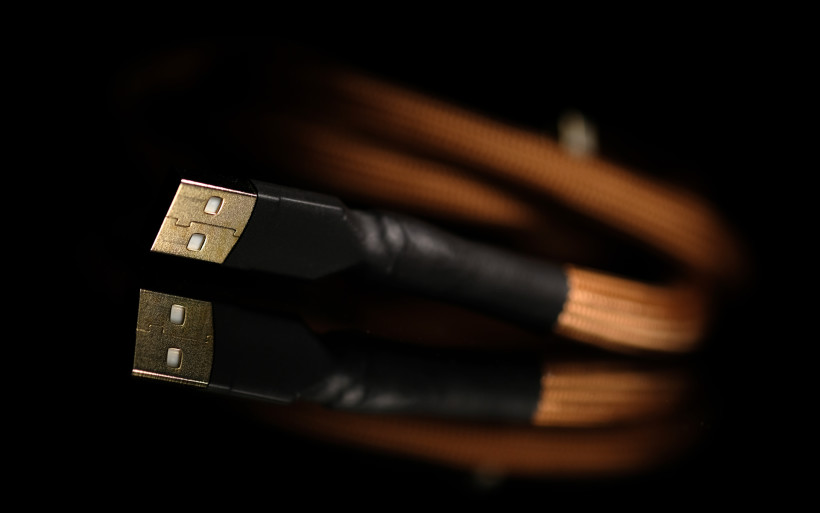 The Copper Signature’s more complex internal composure versus the spicier wilder Copper One, was one of the most noticeable disparities. Top shelf cables aren’t flashy, usually they sport a very particular type of calm, which allows music to flow better. The Signature leash had this plenty of; it sounded rounder, thicker and denser versus its entry-level sibling, and had its instrumental textures more moist on top of that. Such work would then imply the former’s mellower approach and also quite possibly warmer flavour, but this wasn’t the case. The very core of this cable was anything but diluted and gentle. Its backdrop I’ve found even more organic, vivid and dark than the same aspect in the Copper One, but fundamentally similar. Quietness of this musical canvas translated to everything displayed in there of finer, more vivid and quality wise significantly better sort. If a regular USB throwaway we’d now frame as a lossy MP3 file and the Copper One as the same material served as a WAV case, then its DSD128 version would be the Copper Signature’s take on it. Quietness, moisture, liquidity and insight increased accordingly with all listed items’ price, that was the clear pattern.
The Copper Signature’s more complex internal composure versus the spicier wilder Copper One, was one of the most noticeable disparities. Top shelf cables aren’t flashy, usually they sport a very particular type of calm, which allows music to flow better. The Signature leash had this plenty of; it sounded rounder, thicker and denser versus its entry-level sibling, and had its instrumental textures more moist on top of that. Such work would then imply the former’s mellower approach and also quite possibly warmer flavour, but this wasn’t the case. The very core of this cable was anything but diluted and gentle. Its backdrop I’ve found even more organic, vivid and dark than the same aspect in the Copper One, but fundamentally similar. Quietness of this musical canvas translated to everything displayed in there of finer, more vivid and quality wise significantly better sort. If a regular USB throwaway we’d now frame as a lossy MP3 file and the Copper One as the same material served as a WAV case, then its DSD128 version would be the Copper Signature’s take on it. Quietness, moisture, liquidity and insight increased accordingly with all listed items’ price, that was the clear pattern.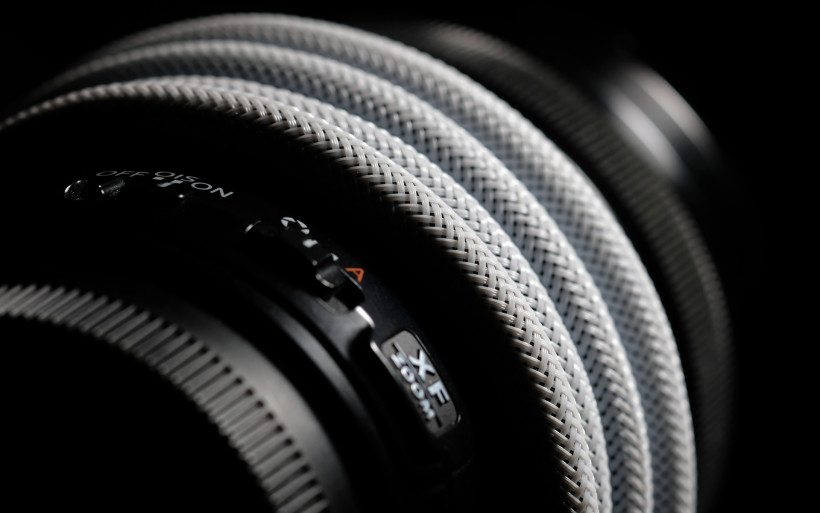 The format talk above would imply Copper One’s raw profile versus its costlier kin’s more humane approach. However, the difference between these two stretched way beyond to spatial presence and impact. The Copper Signature’s more powerful work was heard loud and clear during party level auditions, it introduced the sensation of greater control, slam and dynamic potency. These features require jumpy repertoire served loud to be fully engaged and in effect felt, otherwise they’re on standby. Once that was done, Pier Paolo’s costlier USB specimen painted broader and deeper musical landscapes, which it filled with gutsier, bigger and more alive virtual shapes, also outlined on point and completely liberated from any hints of duskiness. That’s where the main disparity in both Italians’ performance was found. It was no lesser than their different takes on internal moisture and quietness, whereas the final blow the Copper Signature delivered via more substantial, spatially splashier, better extended and less frosty top end swings. All this combined not only proved me that Portento Audio’s founder knew well how to set today’s loaners apart both on performance and price counts, but also he did so utmost accurately to my ears.
The format talk above would imply Copper One’s raw profile versus its costlier kin’s more humane approach. However, the difference between these two stretched way beyond to spatial presence and impact. The Copper Signature’s more powerful work was heard loud and clear during party level auditions, it introduced the sensation of greater control, slam and dynamic potency. These features require jumpy repertoire served loud to be fully engaged and in effect felt, otherwise they’re on standby. Once that was done, Pier Paolo’s costlier USB specimen painted broader and deeper musical landscapes, which it filled with gutsier, bigger and more alive virtual shapes, also outlined on point and completely liberated from any hints of duskiness. That’s where the main disparity in both Italians’ performance was found. It was no lesser than their different takes on internal moisture and quietness, whereas the final blow the Copper Signature delivered via more substantial, spatially splashier, better extended and less frosty top end swings. All this combined not only proved me that Portento Audio’s founder knew well how to set today’s loaners apart both on performance and price counts, but also he did so utmost accurately to my ears.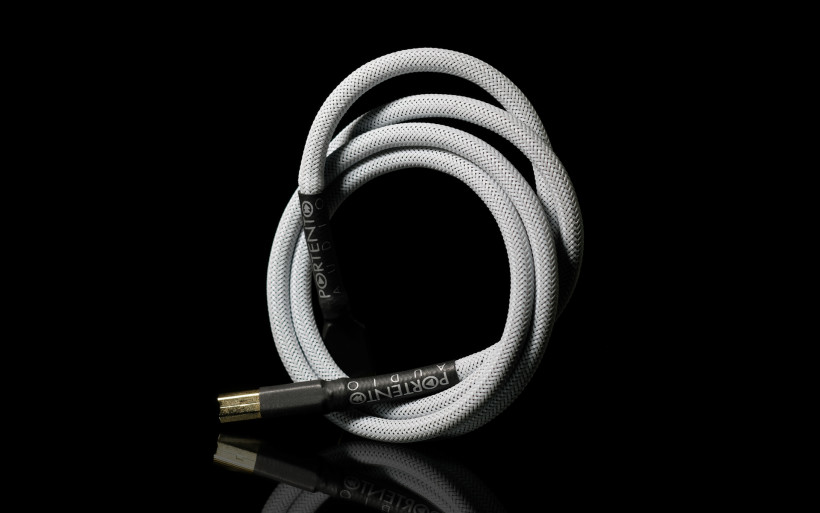 Portento Audio Copper Signature put up against iFi Audio Mercury3.0 was an interesting match. These two products weren’t alike. The latter had its upstairs hotter and shinier to have i.e. percussion plates less gravitational and shorter. It painted smaller sound sources, outlined them via thinner sharper more strongly pressed pencil swings, and filled their insides with less damp paint. It’s safe to say that the British cable was spicier, more ethereal, explicit and lit up but less euphonic. In this context today’s Signature specimen was tonally more grounded, texturally somewhat on the syrupy side and had its top end a bit darker yet of finer grade, not icy at all. Downstairs done the Italian way was rounder, thicker and also slower, whereas its on-stage acts had a bit less air but weren’t stuffy. On overall approach this comparison included two opposite flavours to a degree, but on refinement and sheer musical fluency Pier Paolo’s product had an edge. To my ears the only thing it realistically could have a bit more of, was speed. But then again, this small bottleneck in exchange for everything else the Copper Signature did truly well, my ears mapped as a bargain.
Portento Audio Copper Signature put up against iFi Audio Mercury3.0 was an interesting match. These two products weren’t alike. The latter had its upstairs hotter and shinier to have i.e. percussion plates less gravitational and shorter. It painted smaller sound sources, outlined them via thinner sharper more strongly pressed pencil swings, and filled their insides with less damp paint. It’s safe to say that the British cable was spicier, more ethereal, explicit and lit up but less euphonic. In this context today’s Signature specimen was tonally more grounded, texturally somewhat on the syrupy side and had its top end a bit darker yet of finer grade, not icy at all. Downstairs done the Italian way was rounder, thicker and also slower, whereas its on-stage acts had a bit less air but weren’t stuffy. On overall approach this comparison included two opposite flavours to a degree, but on refinement and sheer musical fluency Pier Paolo’s product had an edge. To my ears the only thing it realistically could have a bit more of, was speed. But then again, this small bottleneck in exchange for everything else the Copper Signature did truly well, my ears mapped as a bargain.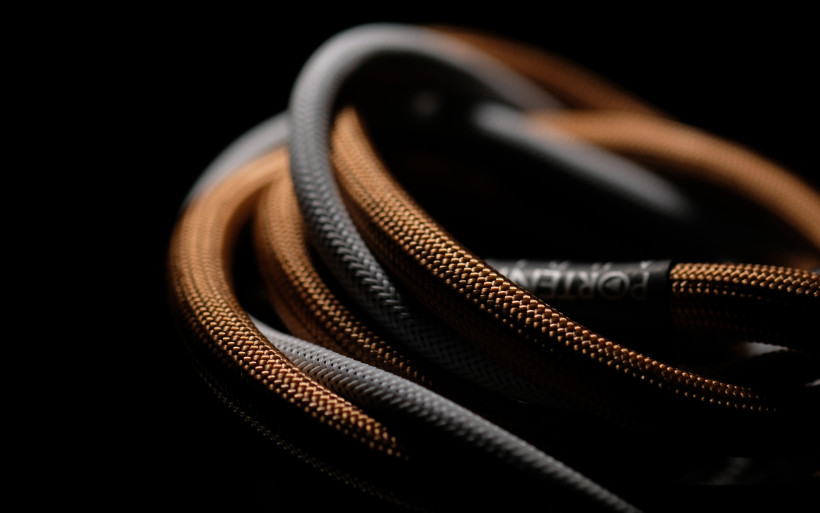 The last thing on the to-do list was the Copper Signature’s fight with my three times as costly active USB chain. Yet again all major differences between both contestants emerged quickly and clearly, but weren’t as severe as those listed in exclusive cable comparisons described above. The iFi chain wasn’t any quieter or smoother to my ears, which gave a reason to think that on these counts I might’ve touched the performance ceiling. Nonetheless, my regular USB stack outclassed the Copper Signature in quite similar fashion the latter outmatched its entry-level sibling. The main advantage the Brits had over the TOTL Italian narrowed down to all virtual shapes’ sensible on-stage presence and spatial grandeur behind them. iFi’s dagger went in swiftly via extra speed, snappier dynamic reflexes, more insight and more precisely sculpted yet still humane outlines. Still, what the Copper Signature was able to achieve versus this potent team of six was admirable, especially in the context of significant price gap between them.
The last thing on the to-do list was the Copper Signature’s fight with my three times as costly active USB chain. Yet again all major differences between both contestants emerged quickly and clearly, but weren’t as severe as those listed in exclusive cable comparisons described above. The iFi chain wasn’t any quieter or smoother to my ears, which gave a reason to think that on these counts I might’ve touched the performance ceiling. Nonetheless, my regular USB stack outclassed the Copper Signature in quite similar fashion the latter outmatched its entry-level sibling. The main advantage the Brits had over the TOTL Italian narrowed down to all virtual shapes’ sensible on-stage presence and spatial grandeur behind them. iFi’s dagger went in swiftly via extra speed, snappier dynamic reflexes, more insight and more precisely sculpted yet still humane outlines. Still, what the Copper Signature was able to achieve versus this potent team of six was admirable, especially in the context of significant price gap between them.
Summary
As harsh as it may sound, USB products aren’t exactly a thrilling topic to write about. That’s why it’s fair to now come clean and admit that this report started as a mildly interesting cable duty, driven by Pier Paolo’s mindset more than anything else early on. However, today’s assignment quickly morphed into something far more engaging and its USB specimens’ generous price-to-performance ratio emerged as the key reason.
Portento Audio Copper One and Copper Signature models are nicely put together and slinky enough to leave any usage struggles at the door. As a potent reality check tool, the former cable reminded me about how bad ordinary printer throwaways are for audio, and how substantially better an USB pipeline can get for pennies, which in effect turned this product into a poster child of how to do it. If there were any downsides to the Copper One’s performance given its cost, I failed to see them.
Portento Audio Copper Signature on sonics scored significantly higher notes versus its entry-level sibling, which is just the way it should be considering their different price tags. But Pier Paolo’s ability to have these two highly effective models tiered very much accordingly, is what truly had me sold on the USB done his way. That’s why if you’re in pursuit of such a product, to start your search at Portento’s sounds like a solid plan to me. ‘Till next time!
Associated Equipment:
- Amplifiers: Trilogy 925, FirstWatt F7, Bakoon AMP-13R, Audiodinamica BeCube
- Preamplifiers: Thöress DFP
- Speakers: Boenicke W11 SE+, Cube Audio Nenuphar
- DAC: LampizatOr Pacific (KR Audio T-100 / Living Voice 300B + KR Audio 5U4G Ltd. Ed.)
- Transport: fidata HFAS-S10U
- Speaker cables: Boenicke Audio S3, LessLoss C-MARC
- Interconnects: Audiomica Laboratory Erys Excellence
- Power components: Gigawatt LC-3 EVO -> PC-3 SE EVO+, Gigawatt PF-2 + Gigawatt LC-2 MK2 + Forza AudioWorks Noir Concept/Audiomica Laboratory Ness Excellence/LessLoss C-MARC
- Rack: Franc Audio Accesories Wood Block Rack
- Music: NativeDSD
Retail prices of reviewed components in EU (incl. tax):
- Portento Audio Copper One (1.0m): €119
- Portento Audio Copper Signature (1.0m): €599
Manufacturer: Portento Audio


